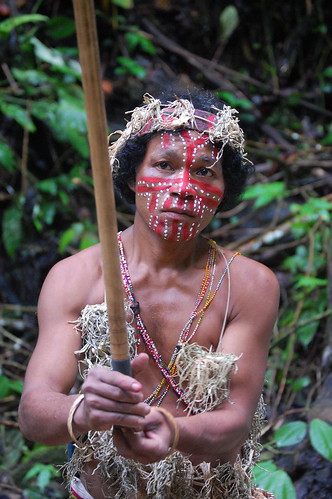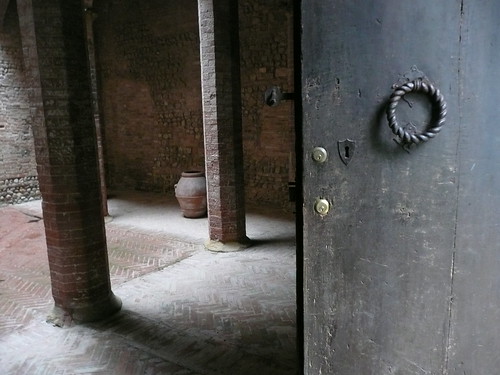Monday, June 20, 2011
Brockway Smith-Brockway
The center of my home campaign is Alyan, a continent that might be called a high medieval version of Middle Earth. The land, both town and country is generally beautiful and peaceful, the elves hold considerable power, but exercise it infrequently, and there are little pockets filled with hobbits, here and there. Plus there are real cities, and well-maintained roads, temples, and coastal maritime trade. But ambitious as humans may be, the Elves make sure they don’t get too—well— human. Thus, Brockway, the son of a blacksmith in Erah, an idyllic village governed by the light touch of a mirthful and much-loved sheriff/bard (yes, a literal Mary Sue character—my own PC from another campaign), really had to work hard just to get out of the shadow of all of these nice nice people.
Brockway started as a fighter, but with the intent of changing classes to become a magic-user. This is hard to do in Alyan. The Elves are proprietary about magic. If humans are allowed to understand it, it will probably be bad for humans, and definitely be bad for the Elves. Nevertheless, Brockway traveled to the foot of Grey Mountain, seat of the Elf king, and made his appeal. Right place at the right time. In fact, one branch of the elf school had fallen under some kind of curse, and only humans could fix it. (Rahasia? Kinda)And, in return for doing so, Brockway was taught the rudiments of magic.
But Alyan proved too small for Brockway. Although he found small opportunities for adventure(for instance, Horror on the Hill), the Elves were reluctant to teach him new spells, and the rare human mage he encountered had little to teach him beyond cantrips. Plus every time he went home to Erah, he found that tales of his heroic deeds had preceded him, only to be recast as buffoonery by that mirthful and much-loved sheriff/bard who gently governed the village. But in his commerce with the elves, Brockway learned that they were so jealous in hiding the secrets of their magic for very solid, rather than theoretical, reasons. Alyan had been invaded in the past, about a century ago, by magic-wielding humans from a place over the sea known vaguely as “the Ori Lands.” The people of Alyan would not have repelled the invaders without the elves and their magic. Wouldn’t that be all the more reason for the humans of Alyan to also learn magic? Maybe, but Brockway didn’t have time to argue with elves, and so he found a captain willing to take him to the Ori Lands, so that he might seek out a teacher among the elves’ ancient enemies.
The Ori Lands are a mish-mash of what Occidental people once called the Orient; Brockway’s adventures were confined to an area inspired by the 1,001 Nights. This was, of course, liberating for the DM as it let me use some adventures that were just wrong for Alyan, such as B4 The Lost City. Brockway wasn’t that impressed by the Magi of Usamigaras, and was asked to leave Cynidicea by a temporary confederation of Gorm Brothers and Madarua Sisters. (Brockway’s player also ran Ophelia, a Cynidicean priestess of Madarua who once fought alongside Beatriss in the Sisters campaign against the Yuan-Ti who had taken up residence in the lower city.) All the same, Brockway had other adventures in the desert and finally got to do big things for big people (Pharaoh, Oasis of the White Palm as well as several home-grown adventures) and got properly rewarded. Besides gp and xp, he found a proper master, married his master’s daughter, and began to gather a small, but formidable posse of like-minded adventures, including Elamurix, a renegade elf who had no qualms about trading magical secrets with humans who had spells of their own worth sharing.
And then, for some reason, it was time to go back to Alyan. The reason might have been that Brockway had learned of an evil cult that was a threat to Alyan, but regardless, the defeat of this cult soon became Brockway’s primary goal. Alyan’s nascent maritime industry was threatened by pirates, and these pirates, it seemed, had a safe haven on an island some undisclosed distance from Alyan. On the island, there was a temple, and destroying this temple was the best way to end the piracy. That was Brockway’s theory and the Elf King went along with it, agreeing to fund the building of a ship and give his moral support as Brockway gathered about 100 adventurers to go attack the temple—about a dozen who would enter the temple itself, while the bulk remained to guard the ship and ward off any counter-attacks, with a few high-level adviser-types provided by the Elf King himself. In some ways, the Temple proved to be kind of like the Cave of Chaos all over again, in that the forces of evil were obviously too disorganized to actually mount any formidable attack against civilization and goodness. (There was, for instance, no naval shipyards, and once Brockway & Co. arrived on the scene, the pirates seemed to desert their former protectors to seek out a new safe haven.) But there was glory and treasure to be had, and despite the casualties (most notably, Elamurix, killed in a troll ambush against the party on their way back from the Temple to their ship), Brockway selected several teams of heroes and heathen-slayers to dig down to the lowest level and met Zuggtmoy, Iuz, and St. Bocrates (my slight variant on St. Cuthbert) along the way. I don’t think he entered “the nodes,” but he did more than enough to make him a hero (and a believer). He returned to Alyan and received a plaque, a finely-crafted model of the ship with 24kt gold hardware, and a coat-of-arms (complete with a double-barreled last name). He was a good enough sport to return to Erah, where he proved that he was the good-natured one all along—laughing along with half-mocking songs, when he could easily and half by rights level the whole village and toast its sheriff-bard.
And then the elves invited him to come to Grey Mountain and have funded his on-going magical research ever since.
Recently my friend who played Brockway suggested that he was “kind of a lout.” Although many others said this, I don’t think it’s fair. He was a tall poppy, and as DM, I ‘m proud to say that like both people of Erah and the Elves of Grey Mountain, I never once gave him an even break. He was cautious when he needed to be, but never cowardly, taking his place on the front line when he wasn’t casting spells, and sharing magic items with his henchmen. As of this writing, he has discovered in the library at Grey Mountain, a reference to the lost tomb of Acererak.
Friday, June 17, 2011
Salt and Iron

Friday, June 10, 2011
Siege of Quitokai
As the title of this post suggests, I used the SBH rules to run a session in my Oriental Adventures D&D game. The PCs, while in the midst of a mission, have spent several weeks resting, planning, and training in the village of Quitokai. In the past, Quitokai has been targeted by slave-traders. The prescence of the PCs has discouraged the raiders from pursuing their previous strategies (sometimes deception, sometimes small-scale raids) not only in Quitokai, but in the general area. So they organized a larger assault on the village, attacking at a time when most PCS were out on patrol.
Rather than attack themselves, the slavers enlisted some of Quitokai's neighbors-- members of hunter-gather tribes who rarely fight openly with the agricultural people of Quitokai. Members of the Red Clan paint their faces red and they stayed in the background. Members of the Wolf Clan hunt with trained wolves and these were used in the initial attack. The wolves brought down one of the militia and frightened off many of the others. This gave the Wolf Clan warriors time to set the palisade on fire. But then the Quitokai militia re-organized, and using their bows from the safety of the watch-tower routed the Wolf warriors, the wolves themselves following close behind them. As the sun was setting, one of the PC-led groups (Gunjar, with some villagers) returned from patrol and the attackers retreated into the jungle.
(apologies to the real-world man in the photo below who is presumably peaceful)
new digs
This was a really great session. After thwarting the goblins' attack on the Viper Clan Compund, we mounted a swift counter-attack. We went into it thinking that after picking off a few easy targets, we'd have to retreat before the main force. Instead the "retreat" was mutual. We dealt with the two wolf-riders on patrol outside, and the successive waves of defenders were badly-organized. We stayed until their leaders called everyone back inside the tower. We had no casualties and returned to the Viper compound with a "prisoner," a charmed goblin named Nebling.
Nebling gave us some details about the goblins forces, and gave us the impression that we had significantly reduced their number, especially the number of wolf-riders-- but that they had associates would be returning soon. We resolved to attack the next day.
Our plan was to split into two groups, with one group distracting and dispatching the wolf-rider guards outside and anyone on top of the tower, while the other group secured the door closed from the outside. Next, we would scale the side of the tower and attack from above, hoping that at least we'd only have to deal with goblins and not wolves, and might even be able to make use of burning oil.
The problem with the plan was that, it didn't prepare for contingencies, even beneficial ones such as the fact that there were no wolf-riders on patrol. The "wolf group" went ahead and scaled the tower while the "door group" had trouble with some pits. Rather than hold the door itself, the "door group" created a nice mess of grasping weeds right in front of the door. The group on top of the tower just held the trap door closed.
The goblins panicked and were routed. Unfortunately, the goblin's shaman escaped, and the dead body of their captain, now doubt laden with treasure, was carried off by a fleeing wolf. But we got a tower in Mor!

